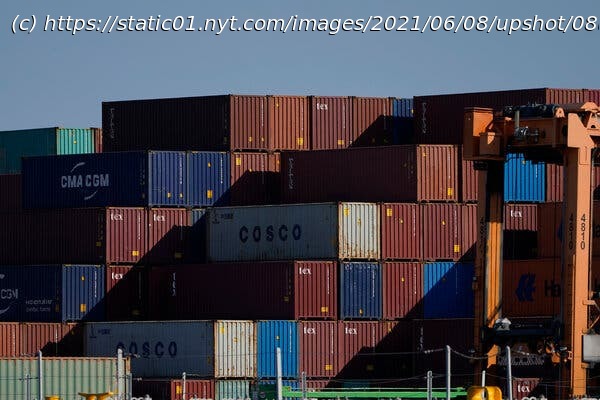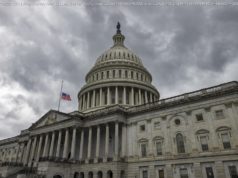New trade data suggests the outlook for the U.S. economy will depend in part on the rate of recovery of other nations.
The United States, with its aggressive pandemic aid measures and rapid vaccine rollout, is propelling the world economy forward, acting as a source of demand from all corners of the globe. The American government has been spending billions, creating booming demand in the United States. As new trade data shows, though, a meaningful share of this money is leaking overseas and going toward imported goods, in what economists call “fiscal leakage.” Ultimately, the outlook for the American economy will depend on the ability of other countries to take over as drivers of global demand in the months ahead — a prospect that remains uncertain. America is buying much more stuff from overseas, as its stimulus-fueled economy revs forward, while the rest of the world has not yet caught up and started buying more American exports. That is why the trade deficit was $68.9 billion in April, which was down from $75 billion in March, but far above levels of around $45 billion per month immediately before the pandemic. People are spending their stimulus money on imported furniture, appliances and other goods. One effect is that the rest of the world is acting as a pressure valve for inflationary forces that are building within American borders. If you think gasoline and lumber prices are high now, imagine if the slow-growing economies of Europe and Japan were recovering at the same breakneck pace as in the United States. “Fiscal leakage is inevitable,” said Maurice Obstfeld, a University of California, Berkeley, professor and former chief economist of the International Monetary Fund. “It’s desirable to the extent it will somewhat moderate inflationary pressures. And it’s desirable to the extent that to some degree it helps spur growth in the rest of the world, some of which comes back to help us.” It reflects a difficult geoeconomic needle the United States is trying to thread. It’s best for everybody if the rest of the world joins in the party and is able to power global demand, especially once the American stimulus dollars are largely played out.
Home
United States
USA — Financial America Is Driving the Global Economy. When Does That Become a Problem?






